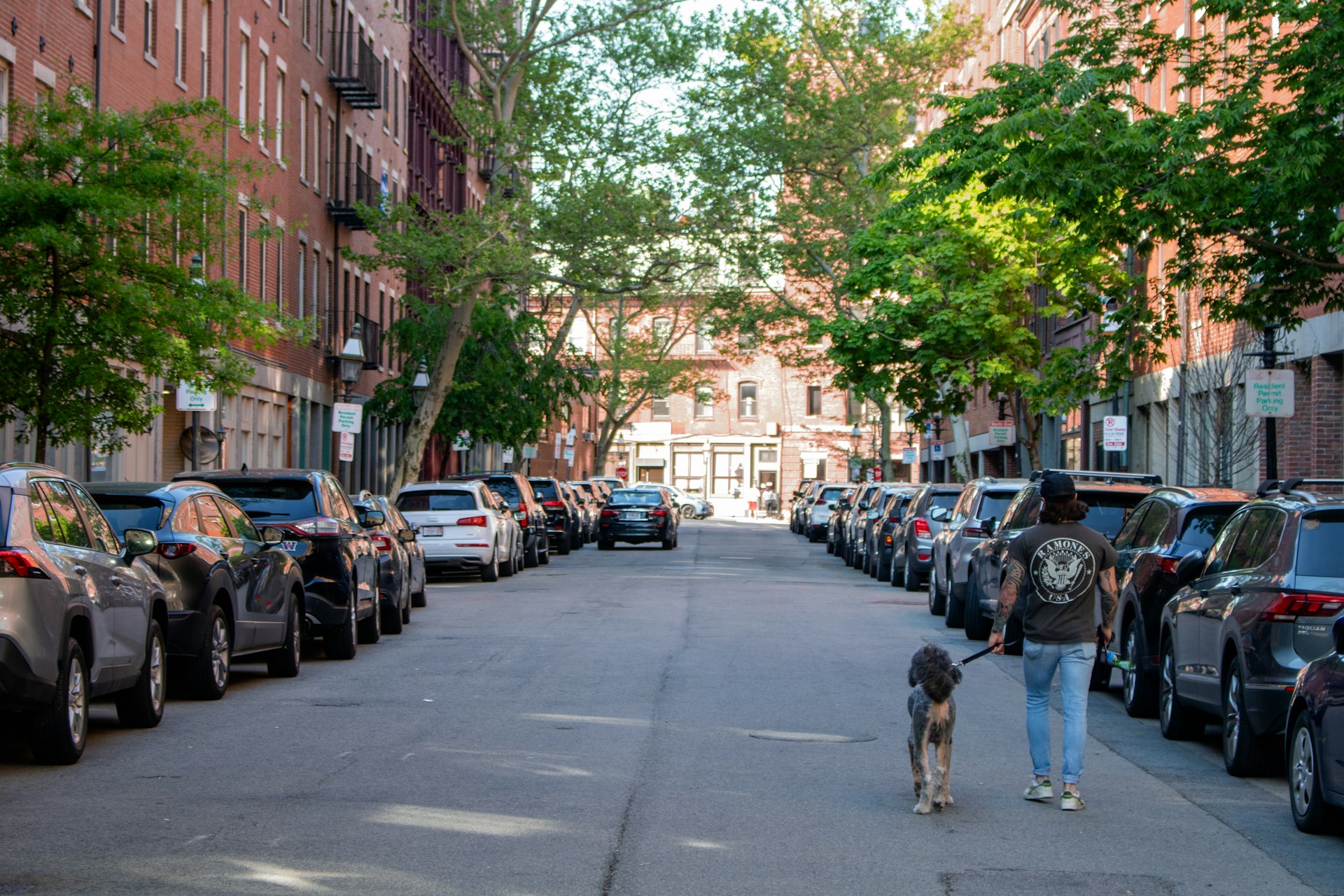Why Walkable Neighborhoods Matter for Today’s Homebuyers

Photo by Zoshua Colah on Unsplash
Understanding the Value of Walkable Neighborhoods
Walkable neighborhoods have become a top priority for many homebuyers. These communities offer easy access to daily necessities, reduce reliance on cars, and foster genuine social connections. Homebuyers are increasingly seeking out neighborhoods where they can walk to stores, parks, cafes, and schools-a shift that is reshaping real estate markets across the country. Understanding the importance of walkable neighborhoods is essential for anyone looking to make a smart, future-proof investment in their next home.
Key Benefits of Walkable Neighborhoods for Homebuyers
1. Increased Property Values and Investment Stability
Homes in walkable areas often command premium prices and tend to retain or grow their value even in fluctuating markets. Studies show that reducing traffic and enhancing pedestrian amenities can increase residential property values by as much as 18-20%. For example, a reduction in traffic speeds by 5 to 10 mph has been linked to a 20% rise in adjacent home values. Similarly, traffic restraints that decrease vehicle volume can add significant value to homes in the area [1] . According to recent industry data, properties with higher walk scores consistently experience strong demand, making them appealing for both primary residences and investment properties [2] .
2. Lifestyle Convenience and Cost Savings
Living in a walkable neighborhood can lead to considerable cost savings, particularly in transportation. The average annual cost of owning a car is nearly $9,300, and many households own more than one vehicle [5] . By choosing a home where walking or biking replaces most car trips, buyers can save thousands of dollars each year. In addition to financial benefits, walkable communities make daily life more convenient-residents can enjoy quick strolls to local shops, schools, or recreational spaces without the hassle of driving and parking [3] .
3. Health, Well-Being, and Community Connection
Walkable neighborhoods encourage a more active lifestyle, resulting in better physical health and fitness for residents. Regular walking and biking not only contribute to cardiovascular health but also help reduce stress and increase overall well-being. Furthermore, these communities foster stronger social bonds through increased interaction among neighbors, local events, and organized activities. Homeowners frequently report a greater sense of belonging and engagement in walkable areas, citing community events and daily encounters as sources of happiness and support [5] . This sense of place is a significant draw, especially as people seek meaningful connections in an increasingly digital world [2] .
What Homebuyers Want: Market Trends and Buyer Preferences
Recent surveys highlight the growing demand for walkable homes. According to the National Association of REALTORS® 2023 Community & Transportation Preferences Survey, 79% of respondents consider walkability to be “very” or “somewhat” important, and 78% are willing to pay more for homes in walkable communities. For younger buyers, especially Gen Z and millennials, this figure rises to 90%, with a third indicating they would “pay a lot more” for such amenities. These trends underscore the increasing influence of walkability on home values and buyer decisions [4] .
How to Identify and Access Walkable Neighborhoods
Step-by-Step Guidance for Homebuyers
Finding a walkable neighborhood requires more than just looking at a map. Here are practical steps you can take:
- Research Walk Scores: Many real estate websites offer walkability ratings known as “walk scores.” These scores assess how easy it is to accomplish daily errands on foot. While not all homes with high walk scores are created equal, this is a useful starting point. You can search for “walk score” or use platforms like Redfin and Zillow, both of which provide walkability metrics for listings.
- Tour the Neighborhood: Visit the area at different times of day. Take walks to see how long it takes to reach shops, parks, or schools. Observe the condition of sidewalks, lighting, and crosswalks. Notice if there are cafes, grocery stores, or community spaces within easy reach.
- Check Local Amenities and Transit: Look for neighborhoods with a variety of amenities accessible by foot. Also, consider proximity to public transportation for longer trips. Cities and counties often provide maps of transit routes and stops-check your local government’s official website or transportation authority for details.
- Engage with Local Realtors: Work with agents who specialize in walkable communities. Realtors can provide insight into new mixed-use developments, recent zoning changes, and neighborhood trends. Ask potential agents about their experience with walkable neighborhoods and request specific examples.
- Review Community Plans and Zoning: Some municipal planning departments publish detailed neighborhood plans or zoning maps. These documents can reveal upcoming developments, planned improvements to pedestrian infrastructure, and long-term investments in walkability. Search for your city’s official planning department online and review available resources.
Addressing Challenges and Considering Alternatives
Pursuing a home in a walkable neighborhood can come with challenges. Competition for these properties is often intense, and prices may be higher than in car-dependent areas. However, some recent research suggests that certain walkable neighborhoods are becoming more affordable than their car-centric counterparts, especially as the cost of car ownership rises [5] . Before buying, weigh the long-term savings in transportation and the potential for healthier living against any upfront premium.

Photo by Angelica Teran on Unsplash
If walkable neighborhoods in your target area are out of reach, consider adjacent communities with emerging amenities or those slated for future development. You may also look for properties near public transit hubs, which can offer similar benefits. Stay engaged with local planning initiatives and community organizations focused on improving walkability-these groups can be valuable sources of information and advocacy opportunities.
Maximizing Your Investment: Lifestyle and Resale Strategies
When purchasing a home, consider the full range of lifestyle and financial benefits offered by walkable neighborhoods. Highlight features such as proximity to parks, schools, and local businesses when evaluating properties. If you plan to resell in the future, remember that buyers consistently rank walkability among their top priorities, making these homes more attractive in a competitive market [2] .
To maximize your investment, stay informed about neighborhood improvements, planned developments, and local events. Participate in community activities and build relationships with neighbors-these connections can enhance your quality of life and contribute to the ongoing vitality of the area.
Actionable Steps for Homebuyers
If you are searching for a walkable neighborhood, you can:
- Use major real estate websites (such as Redfin or Zillow) to filter by walk score or search for “walkable homes for sale in [your city].”
- Contact your city’s planning or transportation department for information on upcoming pedestrian improvements or mixed-use developments. This information is typically available on official city websites or by calling the relevant department.
- Work with a local real estate agent familiar with walkable neighborhoods. Ask about recent sales and current listings in areas with high walkability.
- Engage with neighborhood associations or community groups-many have online forums or social media pages where residents discuss local amenities and initiatives.
Remember, while verified online resources are helpful, speaking directly with local experts and visiting neighborhoods in person will give you the most accurate sense of walkability and community fit.
References
- [1] CivicWell (2013). The Economic Benefits of Walkable Communities.
- [2] At Home With Krista (2023). Why Walkability and Mixed-Use Communities Are in Demand.
- [3] Malakai Sparks Group (2023). Why Tustin’s Walkable Neighborhoods Are Perfect for Buyers.
- [4] National Association of REALTORS® (2023). Survey: Buyers May Pay More to Live in Walkable Communities.
- [5] HSH.com (2023). Like to Walk? Study Shows Walkable Neighborhoods More Affordable.
MORE FROM moneysaversearch.com













